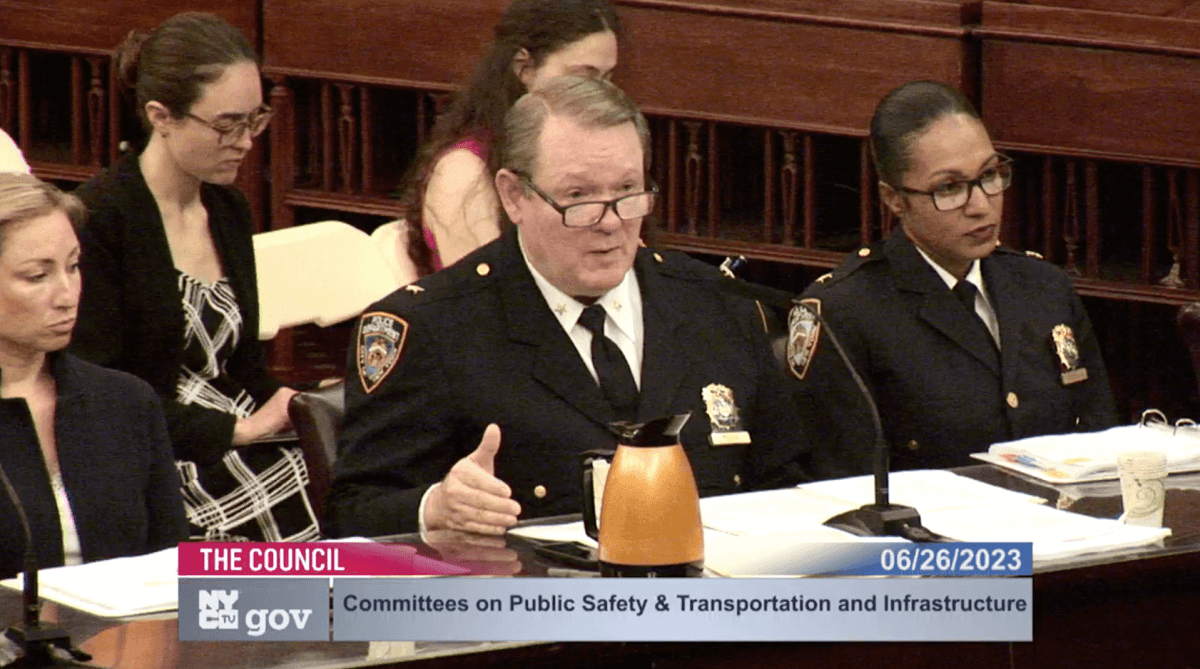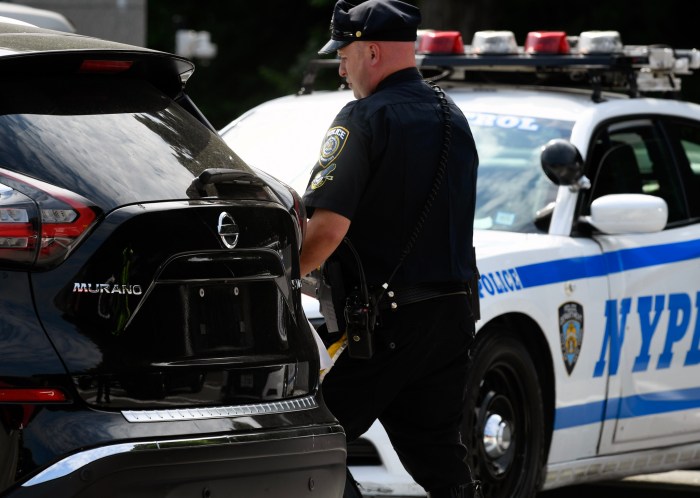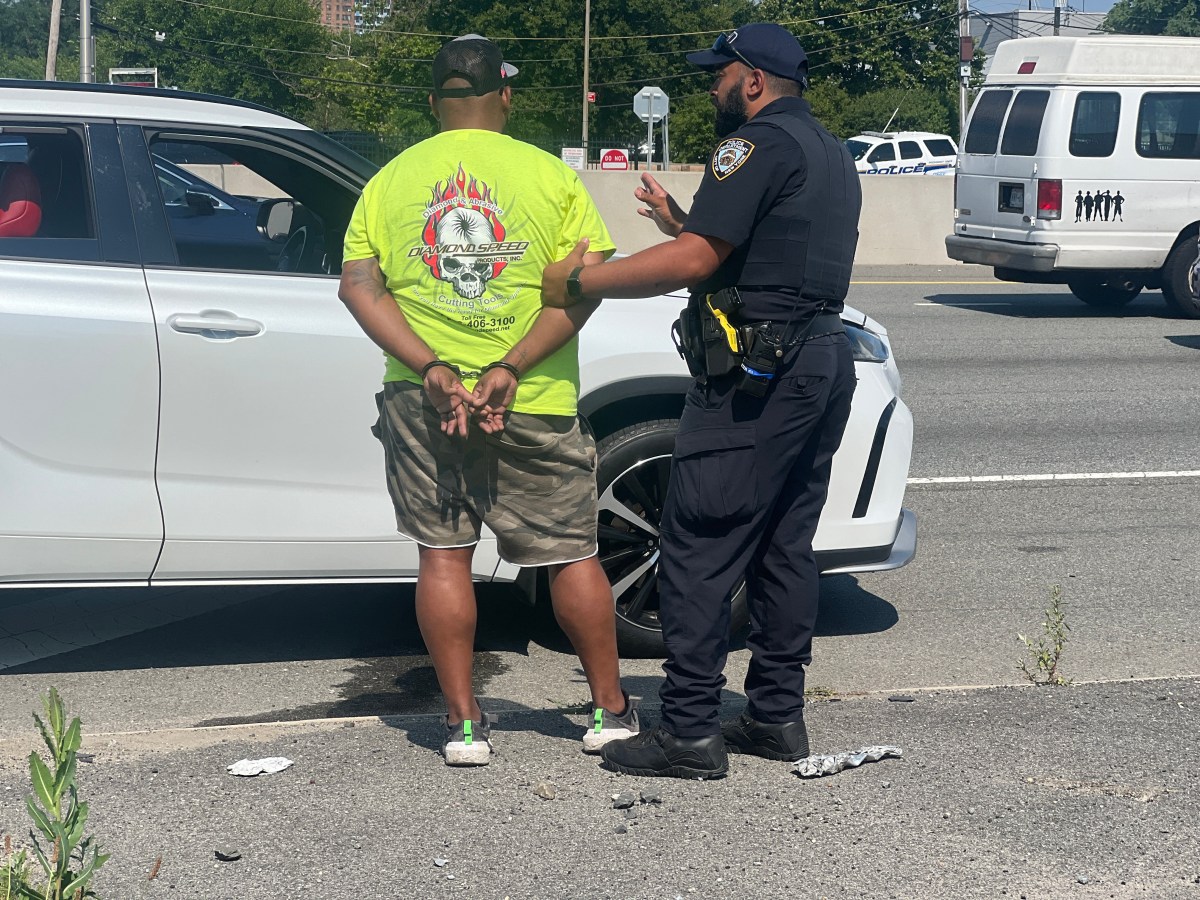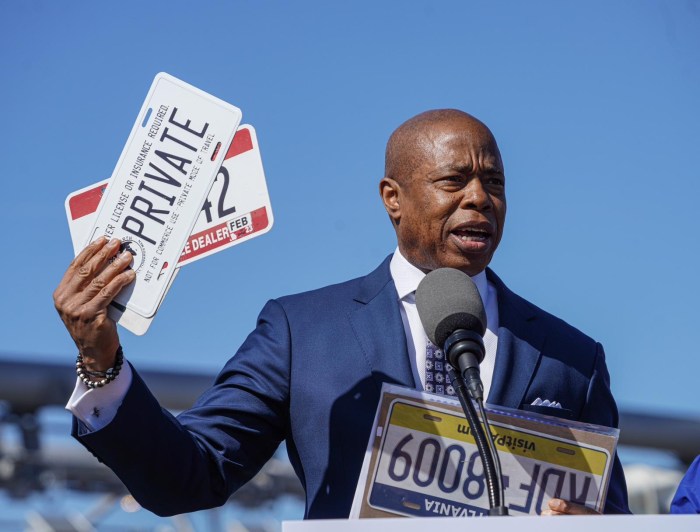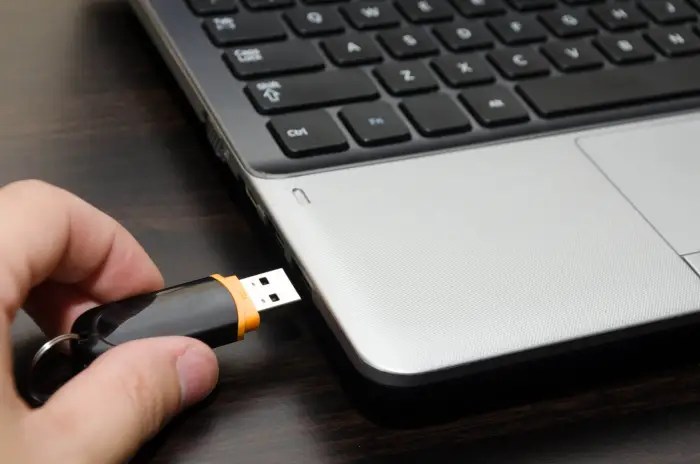The NYPD said in a Council hearing on Monday that traffic stops are its most successful form of enforcement against “ghost cars” that use phony license plates to avoid tolls, tickets and police identification.
As the City Council considers a package of bills that would crack down on both ghost plates and covered or obscured plates, the council Transportation Committee invited the NYPD to discuss its enforcement efforts against the increasingly widespread problem.
In NYC, scofflaws have seized on a rise in pandemic-era temporary paper license plates from other states as a way to evade the law through fake plates, per the NYPD. The Council bills, which would increase fines for driving with phony or expired plates and establish penalties for selling illegal coverings and fraudulent tags, are intended to expand the NYPD’s ability to crack down on ghost plates.
During the hearing, NYPD Transportation Bureau Deputy Chief Michael Pilecki said police strategies for ghost plates involve towing parked cars with paper plates and making arrests when police find fraudulent plates in the course of a traffic stop.
“Any vehicle bearing one of these fraudulent plates instantly becomes undetectable to nearly every aspect of street level enforcement — from tolls to speed and red light cameras and even parking enforcement,” Pilecki said.
For parked cars, traffic court summons generally do not work as a deterrent for ghost cars, Pilecki added. “Summonses issued to these vehicles are unenforceable and scofflaws know that, often leaving towing as the only effective countermeasure. For that reason, the department continues to prioritize vehicles with temporary paper license plates for towing,” he said.
But later on in the hearing Pilecki indicated that even towing seems to have limited success for catching fake plates.
Of the 1,084 vehicles that NYPD has towed with paper plates this year, he said, cops only found 18 cases where there were forgeries. On the other hand, NYPD made 1,777 arrests when they pulled over cars that had forged or altered plates for moving violations.
“I have to say, moving violations is the way we’re getting them,” Pilecki said.
Ghost plates are far from the only way that motorists have increasingly taken to evading traffic violations in recent years.
Other methods, as explored in Streetsblog’s viral “Criminal Mischief Series,” involve covering plates with camera-resistant screens, paint, tape and other objects. For these types of plate covering or defacing, Pilecki indicated that towing does work to get the tainted plates off the street and that the NYPD has accordingly increased its propensity to use this method.
“With regard to the towing of vehicles with covered or obstructed license plates, we are up 192% in that area. We have 1,104 tows of that type versus 351 last year,” Pilecki said during the hearing.
The NYPD has put out directives to officers to summon and tow vehicles parked illegally that have a plastic cover over the plates.
The issue with towing that Pilecki cited is that the city has a limited amount of tow space, following the 2021 closure of the Manhattan tow pound that was on Pier 76.
Councilman Oswald Feliz, who sponsored the bills that go after ghost-plate drivers and distributors, said he had also heard from NYPD leaders that they have a shortage of tow space.
“We have three pounds now, Brooklyn, Queens, and the Bronx. So we are reduced by several hundred spots — the number of vehicles that we could tow and store,” Pilecki said, adding that the tow capacity only has enough space for roughly 600 vehicles across all three town pounds.
But there may be room on Staten Island, one lawmaker said.
“We do have some space out in our borough, so maybe we can discuss that,” said Staten Island Councilman David Carr.
Read more: Broadway’s Recovery: Audiences Return to Live Theater



